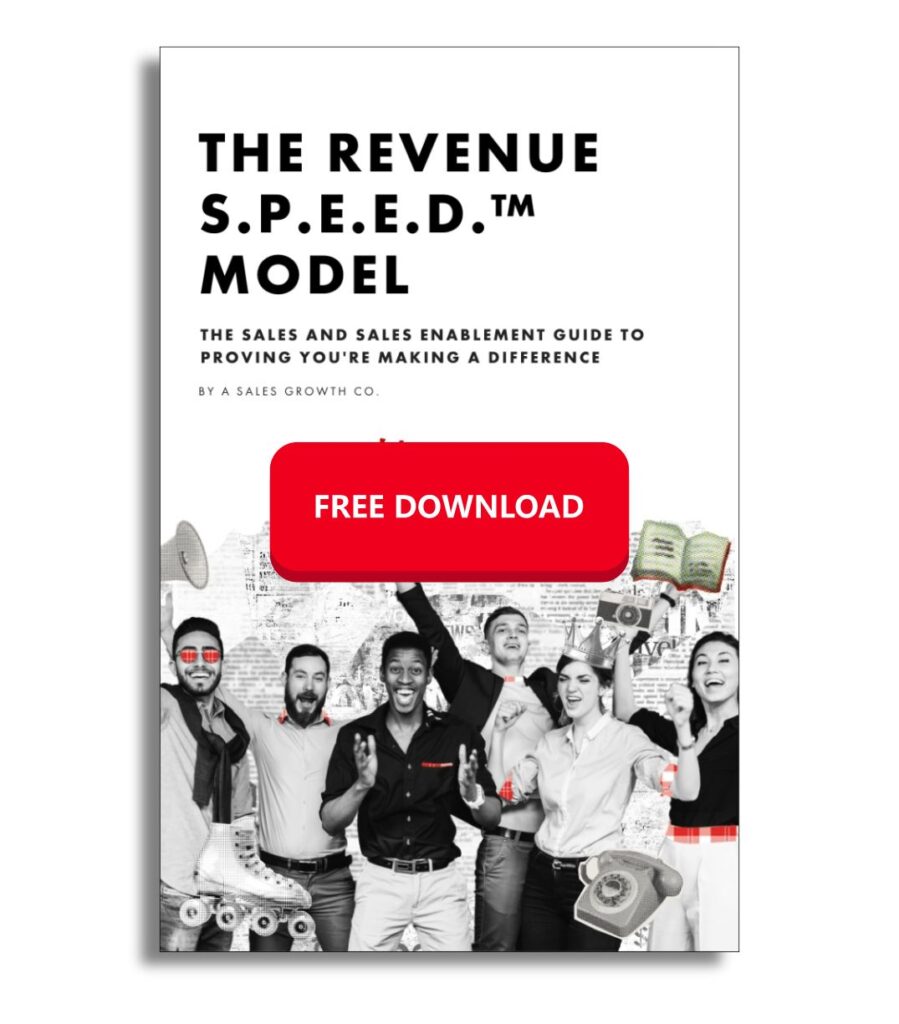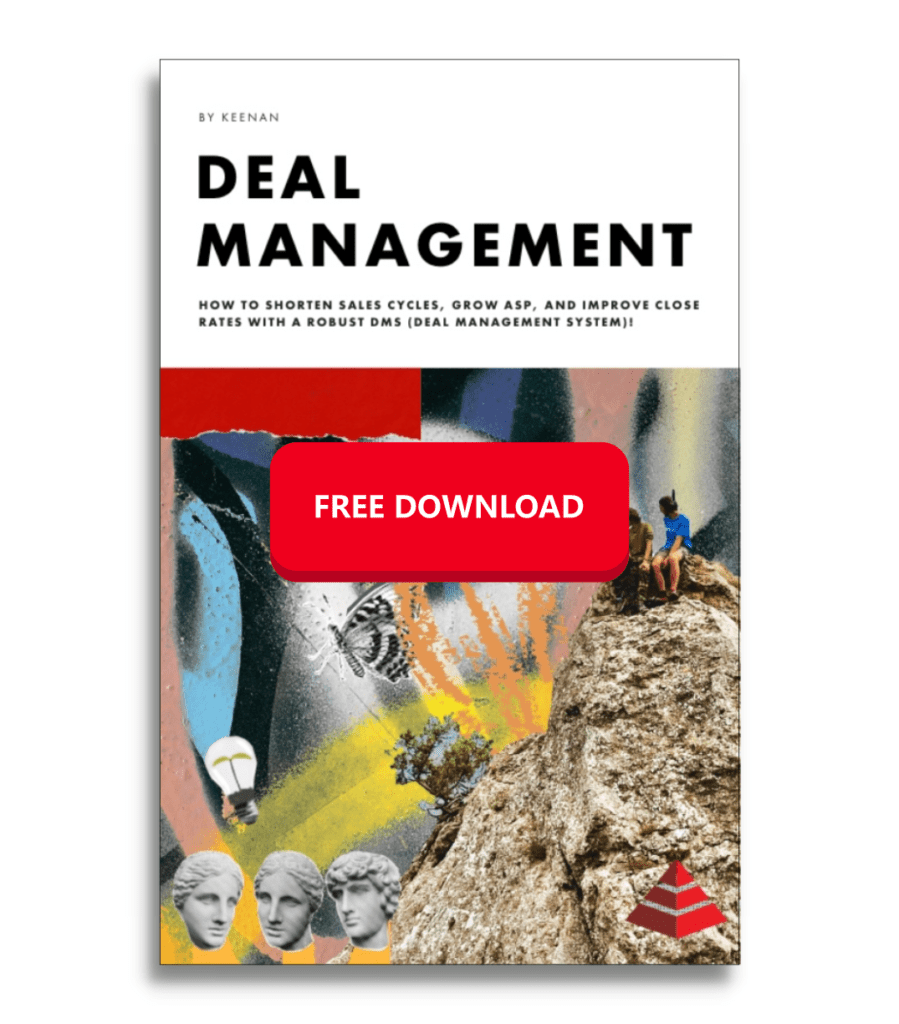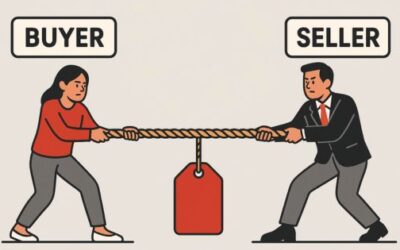A sales strategy plan helps sales teams focus effort, align with account goals, and improve execution. But most plans fall short because they lack structure and accountability. This article covers the 10 key components of a high-performing sales strategy plan based on what works in real sales organizations. Use it to build clarity, improve results, and hold your team to a higher standard.
If the account vision is the compass of account management, then sales strategy plans and account plans are the ship. Sales strategy plans are where the execution happens. It’s the engine to successful account management.
Sales strategies and sales planning are the most inconsistently executed components of selling and sales leadership. Some companies do them, others don’t. Some managers expect they are done in the beginning of the year, only to collect dust as they are never reviewed again. Some organizations never even consider them, others are fanatical about them. Sales planning and strategy development is all over the place.
Why so much inconsistency in something that can make such a difference in your numbers? Because, salespeople don’t like doing them. Sales managers and leaders don’t know how to manage to them and rarely are they developed with accountability. There is no sales strategy plan development school. There is no place companies, salespeople or sales leaders are introduced to good sales strategy. Some people are lucky enough to be introduced to a good simple, effective approach early in their career others are not. It’s a crap shoot, changing from company to company, and manager to manager. It’s unfortunate, because sales strategies are critical.
What is a sales strategy plan?
To be effective, sales strategies have to have a few critical components. A good sales strategy has an assessment. It calls out key opportunities. It has clear goals and objectives. It has a good approach telling you how the goals and objectives will be achieved. It considers risk and contingency plans. It is simple to create. And most importantly it holds people accountable.
Sales strategy development is a critical part of my selling management. Here is the sales strategy plan template I use.
A killer sales strategy will demonstrate a strong assessment of the account or territory. It will highlight if the salesperson is asking the right questions and properly assessing their selling environment. It will demonstrate how well the salesperson understands what is happening and how they are interpreting their assessment. A killer strategy provides direction and focus, attacking those opportunities with greatest chance for winning. And, most importantly a killer strategy holds people accountable for what they said they were going to do.
How do you write a sales strategy plan?
My plans have 10 key components.
1) Assessment of the account or territory
Here is where I want to understand how well the salesperson knows their account. I want to know what is happening in that accounts world, what is the customer working on? What are their goals? Is it a political environment? How do they execute? How do they measure success? etc. This is meant to be and actual assessment. I’m looking for an appraisal and their judgment of the account or territory.
2) Organizational Assessment
This is the internal assessment. This allows me to understand how well positioned the salesperson is internally. Have they built a good pursuit team. How well are they positioned with cross functional teams. Do they understand what internal resources will be required to win. Sales teams can’t win without good internal support.
3) Opportunity
This is my favorite. Based on the account and organizational assessment, what opportunities have been identified. What areas of the business are ripe for the companies products and services? Where is the greatest chance to make quota, beat the competition, make inroads in the account etc? This is where I see my teams critical thinking skills. Poor assessments, drives poor opportunity identification. My best salespeople excel here.
4) Goals
Once the opportunities have been identified, goals need to be created. What is the team going to accomplish? Yes the team has a quota, however I’m looking for goals based on the assessment and identified opportunities. What will the environment afford us? It should be different, than quota. It should also include growth goals and non monetary goals, penetrating certain accounts, getting to certain decision makers etc. I look to see if the goals link and align with their assessment.
5) Objectives
The objectives are the tactical things necessary to make your goals. Simply put, what needs to be done to make your goals?
6) Approach
Here is where the rubber meets the road. Salespeople are notorious for being “gut” driven. The approach section is designed to get my teams thinking about how they are going to execute. What actions are going to be taken to ensure you meet your objectives and make your goals. This IS the strategy piece. What specific strategies, initiatives, and tactics are going to employed. This section provides tremendous insight into how the account or territory is being managed.
7) Risks
More assessment, however in this case, it’s important for the sales person or director to understand the risks associated with the plan. What are its dependencies, what assumptions does it rely on and what can go wrong.
8 ) Contingencies
Understanding the risks, what is the sales person/team going to do IF the risks materialize? What is the back-up plan? Getting the sales team to think ahead and be prepared improves the chance of success.
9) Resources
Understanding all that was said, including the assessments, the goals, the risks, the approach etc, what resources are needed? Does the team have everything it needs? Are there things missing that are critical to success? Do you have the right people, the right product mix, the right budget etc? The resources section allows discussion on whether or not the team is prepared to win.
The template is very importantly to me. I have used it for years with tremendous success. I use it with my salespeople, my sales managers and my sales directors. What makes it most successful however is it’s execution. The template is great, but we bring it to life. To bring it to life, everyone on the team develops a yearly plan at the beginning of every fiscal year. It is a yearly view with yearly goals, objectives, approach etc. We look at the year in it’s totality, discussing what we see, what we are going to do and how we are going to do it.
But, with our yearly view we develop a first quarter view as well. We use the same template but assess, set goals and objectives and layout our approach for the quarter. We break it down in chunks. We meet each quarter to review where we are in terms of the yearly plan and our quarterly plan. At the beginning of each quarterly review, the team outlines what happened that quarter.
Did they meet their quarterly goals, Yes or No? Why? Did they meet their quarterly objectives? What worked, what didn’t? What were the lessons’ learned etc. What needs to change? Having quarterly meetings, every quarter where we review what the team committed to ensures the strategies are relevant and executed to. No dust settles on these plans. This is where the accountability comes in.
10) Accountability
Accountability is critical. My salespeople, managers and directors are managed to their plans throughout the month, quarter and year. What they say becomes the basis for what I do.
This sales strategy plan has become the core to my teams sales success. We can see issues coming before they arise. We are nimble. We find unidentified opportunities, we have an excellent ROSE (return on sales effort). We leverage a team knowledge base. There are no surprises. We know where we are, what needs to be done, what happens and why.
For me, I also get great visibility into how the individuals on the team operate. There is no hiding. I see how they think, process and execute. It’s a great career development and succession planning tool.
Account plans must have a few things to be of value.
They must have goals and objectives. It’s critical to know how you are going to measure success. They need to have a robust account assessment, including what is happening in the industry, the customers financial environment, the political landscape, the clients market positioning, major initiatives, the culture, their buying habits, the key players etc. A full fledge, relevant assessment is key.
A good account plan should include:
An organizational assessment, outlining the team responsible for managing the account. It should include the resources, their ability to execute, the relationships, strengths, weaknesses e tc. A good team assessment can determine how well the team is positioned to execute on the plan. The plan also needs to outline the key opportunities at the account. Where do you have the greatest opportunity for success?
tc. A good team assessment can determine how well the team is positioned to execute on the plan. The plan also needs to outline the key opportunities at the account. Where do you have the greatest opportunity for success?
A good sales strategy plan also needs to include your approach. The approach is where the rubber hits the road. It outlines exactly what you’re going to do and why. In addition, an account plan needs to include the risks to meeting your goals, a contingency plan should something change and a resource section outlining what you need, that you currently don’t have, to be successful.
Once all this has been written down into a cohesive, compelling plan for the year, do it again for the first quarter. It’s critical that your plan for the year be broken down into quarterly chunks.
I can’t emphasize enough the importance of a well-crafted sales strategy plan.
Plans ensure execution. They outline the delivery mechanisms to strong account governance. Get a good sales strategy plan in place. Make sure it aligns to your account vision and you are well on your way.



0 Comments